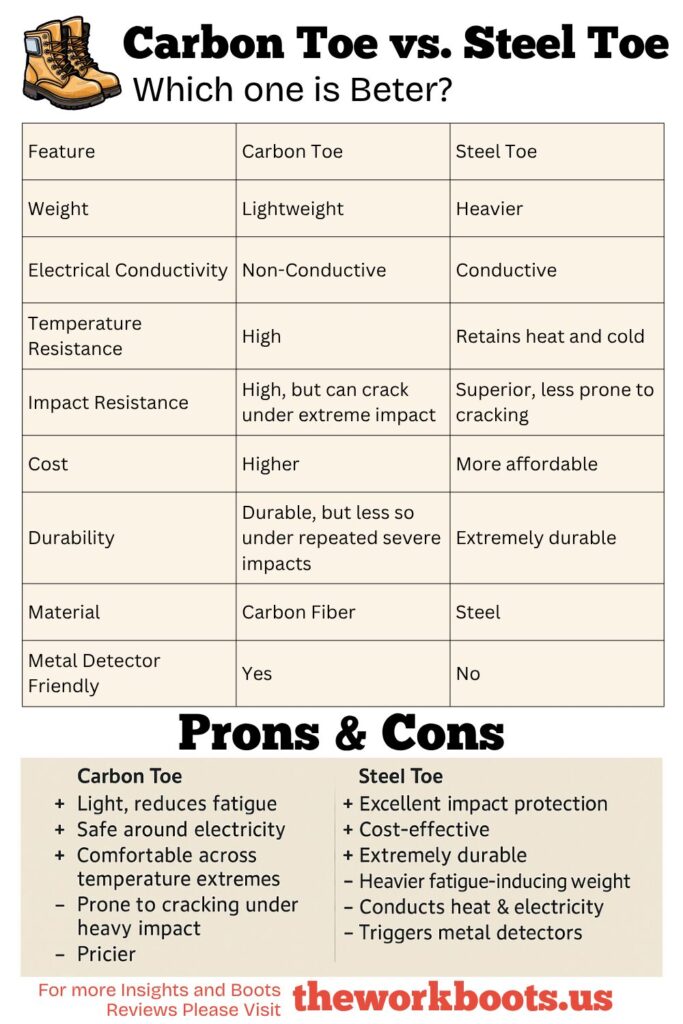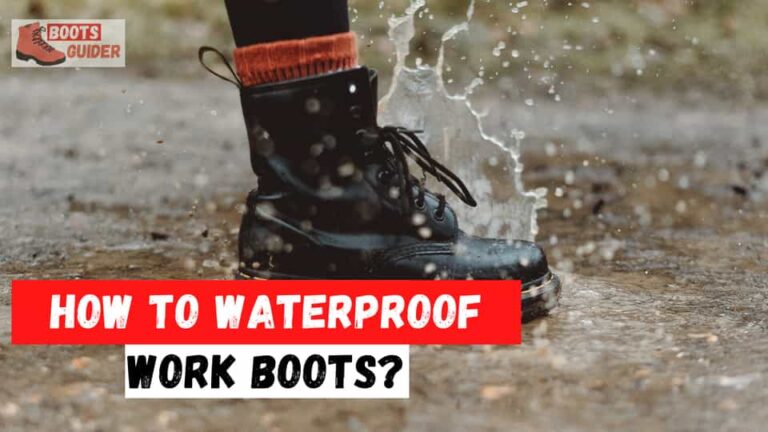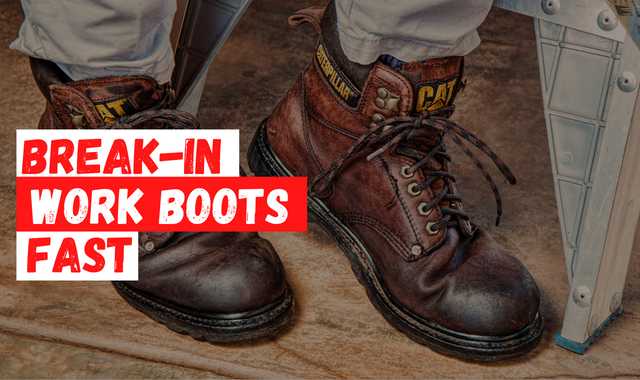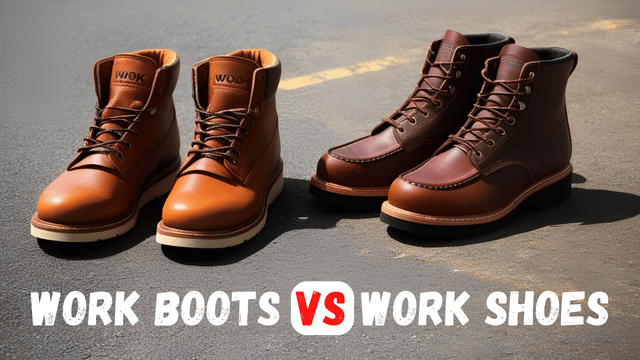Carbon Toe vs Steel Toe: Which One is Best for Your Safety?
Choosing the right work boots ensures safety and comfort in hazardous working conditions. One of the most important decisions you have to make is between carbon fiber toe and steel toe boots. Every type provides specific benefits, designed to protect your feet from a variety of industrial hazards.
Quick Comparison: Carbon Toe vs Steel Toe
| Feature | Carbon Toe | Steel Toe |
|---|---|---|
| Weight | Lightweight | Heavier |
| Electrical Conductivity | Non-Conductive | Conductive |
| Temperature Resistance | High | Retains heat and cold |
| Impact Resistance | High, but can crack under extreme impact | Superior, less prone to cracking |
| Cost | Higher | More affordable |
| Durability | Durable, but less so under repeated severe impacts | Extremely durable |
| Material | Carbon Fiber | Steel |
| Metal Detector Friendly | Yes | No |
To help you make an informed decision, we’ll go over the specific features and differences between carbon-toe vs steel-toe boots.
Understanding the differences between carbon toe and steel toe boots is critical for safety at work and performance, whether you require lightweight, nonmetallic protection or significant damage resistance.
Continue reading to find out which one is most appropriate for your requirements.
Checkout our Exclusive List of Best Waterproof Work Boots
What Are Carbon Toe Boots?
Carbon toe boots feature protective caps made from carbon fiber, a material known for its lightweight and high strength. Carbon fiber is widely used in industries where weight and strength are critical, such as aerospace and automotive manufacturing.
Advantages
- Lightweight: Carbon toe caps are significantly lighter than their steel counterparts, reducing overall boot weight. This can lessen fatigue during long work hours.
- Non-Metallic: Being non-metallic, carbon toe boots do not conduct electricity, making them ideal for electricians and those working in environments with electrical hazards.
- Temperature Resistance: Carbon fiber does not retain heat or cold, providing better comfort in extreme temperatures.
Disadvantages
- Cost: Carbon toe boots tend to be more expensive due to the advanced materials used in their construction.
- Durability: While strong, carbon fiber can be more prone to cracking under high impact compared to steel.
What Are Steel Toe Boots?
Steel-toe boots have been the standard for workplace safety for many years. They feature a protective steel cap that shields the toes from impact and compression.
Advantages
- High Impact Resistance: Steel toe caps provide superior protection against heavy falling objects and severe impacts.
- Cost-Effective: Generally, steel-toe boots are more affordable than carbon-toe options.
- Proven Durability: Steel toe caps are incredibly durable and can withstand repeated impacts without deforming.
Disadvantages
- Weight: Steel toe caps add significant weight to the boots, which can cause fatigue during extended wear.
- Conductivity: Steel conducts electricity and can also retain heat or cold, which might be uncomfortable in certain work environments.
- Metal Detectors: Steel toe boots will trigger metal detectors, which can be inconvenient in security-sensitive areas.
Safety Standards and Compliance
Both carbon toe and steel toe boots are designed to meet various safety standards, such as ASTM (American Society for Testing and Materials) standards for protective footwear. It’s essential to ensure that whichever type of boot you choose, complies with the relevant safety requirements for your industry.
For those interested in exploring more options, you might also want to check out our detailed comparison of carbon toe vs composite toe boots to see how they stack up against each other.
Statistics and Safety Performance
According to the Bureau of Labor Statistics, foot injuries account for a significant portion of workplace injuries. Proper protective footwear can prevent about 75% of foot injuries, highlighting the importance of choosing the right type of toe protection.
A study by the National Safety Council found that:
- 60% of foot injuries were caused by objects falling less than 4 feet.1
- 90% of workers who sustained foot injuries were not wearing protective footwear.2
- Workers wearing safety boots reported a 50% reduction in foot injuries.
These statistics underscore the importance of wearing appropriate safety footwear, whether carbon toe or steel toe, depending on the specific hazards of your work environment.
Choosing the Right Boot for Your Job

Construction and Heavy Industry
For construction workers and those in heavy industries, steel-toe boots are often the preferred choice due to their superior impact resistance and durability. They provide robust protection against heavy machinery, falling objects, and other common hazards in these environments.
Electrical and Utility Work
For electricians and utility workers, carbon toe boots are a better option because they do not conduct electricity. The lightweight nature of carbon toe boots also reduces fatigue during long shifts and provides better comfort in varying temperatures.
Manufacturing and Warehouse Work
In manufacturing and warehouse settings, both carbon toe and steel toe boots can be suitable. The choice depends on specific job requirements.
If your job involves a lot of walking or standing, the lightweight advantage of carbon-toe boots can be beneficial. However, if you handle heavy materials, steel-toe boots might offer better protection.
Outdoor and Extreme Temperature Conditions
For outdoor jobs or those involving extreme temperatures, carbon toe boots are advantageous because they do not retain heat or cold. This feature ensures your feet remain comfortable in both hot and cold environments.
Comfort and Fit
Comfort is a crucial factor when choosing work boots. Both carbon toe and steel toe boots come in various designs and sizes, so it’s essential to try them on and ensure a good fit. Consider the following tips:
- Proper Sizing: Ensure the boots fit well without being too tight or too loose. A good fit prevents blisters and discomfort.
- Insoles: Look for boots with quality insoles that provide adequate arch support and cushioning.
- Breathability: Opt for boots made with breathable materials to keep your feet dry and comfortable throughout the day.
Maintenance and Care
Proper maintenance can extend the life of your work boots, whether they are carbon toe or steel toe. Here are some tips:
- Regular Cleaning: Clean your boots regularly to remove dirt and debris that can wear down the materials.
- Conditioning: Use a leather conditioner for leather boots to keep the material supple and prevent cracking.
- Inspection: Regularly inspect your boots for signs of wear and tear, especially the toe caps. Replace them if you notice any damage.
Environmental Considerations
Sustainability is becoming an increasingly important factor in consumer choices. Carbon toe boots, made with advanced composite materials, often have a lower environmental impact compared to steel toe boots, which require more energy-intensive manufacturing processes. However, the longer lifespan of steel-toe boots can offset this difference.
Conclusion: Which One Is Best for Your Safety?
Ultimately, the best type of safety boot depends on your specific work environment and personal preferences. Here’s a quick recap to help you decide:
- Choose Carbon Toe Boots If:
- You need lightweight footwear to reduce fatigue.
- You work in environments with electrical hazards.
- You face extreme temperatures regularly.
- Choose Steel Toe Boots If:
- You need maximum impact resistance.
- You are looking for a cost-effective option.
- Durability is a top priority in your demanding work environment.
Both carbon toe and steel toe boots offer excellent protection, and the right choice will depend on balancing the specific demands of your job with your comfort and safety needs.
Remember, investing in high-quality safety footwear is a crucial step towards ensuring your well-being in the workplace. Choose wisely and stay safe!
FAQs about Carbon Toe vs Steel Toe
References
- https://ehs.wsu.edu/ehs-training/factsheets/factsheets-faqfootlegprotect/ ↩︎
- https://jmsronline.com/archive-article/Work-related-eye-injuries-Epidemiology-India ↩︎







